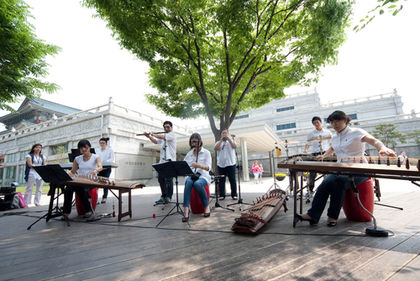Korea, South - Poverty and wealth

Since the 1960s, South Korea has greatly improved the living standards of its entire population, especially in infrastructures that ensure access to safe water, sanitation, medical services, and adequate diet. According to 1998 statistics, all South Koreans have access to health services and adequate sanitation, while only 7 percent has no access to safe water. The expansion and modernization of
| GDP per Capita (US$) | |||||
| Country | 1975 | 1980 | 1985 | 1990 | 1998 |
| South Korea | 2,894 | 3,766 | 5,190 | 7,967 | 11,123 |
| United States | 19,364 | 21,529 | 23,200 | 25,363 | 29,683 |
| Japan | 23,296 | 27,672 | 31,588 | 38,713 | 42,081 |
| China | 138 | 168 | 261 | 349 | 727 |
| SOURCE: United Nations. Human Development Report 2000; Trends in human development and per capita income. | |||||
the health-care system has been particularly effective: between 1963 and 1998, the number of doctors rose from 9,052 (1 for every 2,981 people) to 65,431 (1 per 710 people), and the number of hospital beds from 10,477 (38 beds per 100,000 population) to 236,187 (509 beds per 100,000). There has been universal health-care insurance since 1989. Infant mortality decreased from 43 per 1,000 live births in 1970 to 5 per 1,000 in 1998. Life expectancy increased from 62.6 years in the period 1970-75 to 72.4 years during 1995-2000. It is significantly higher than other Pacific nations such as Thailand (68.8 years), but much lower than Japan, which has the world's highest life expectancy (80 years), and the United States (76.7 years).
Education, which is compulsory until the age of 14, has been a priority for the South Korean government since 1948. During the period 1995-97, it accounted for 17.5 percent of government annual spending, which is higher than most countries including Japan and the United States. The literacy rate has risen from 22 percent in 1945 to 87.6 percent in 1970 and to 97.5 percent in 1998, but is a little lower than North Korea's rate of 100 percent. South Korea has surpassed certain major industrialized countries in college-level enrollments in science (34 percent in South Korea, 23 percent in Japan, 29 percent in the United Kingdom, and 31 percent in Germany). Nevertheless, it is still lags behind North Korea in the percentage of the population with post-secondary education; in 1998, post-secondary graduates equaled 9.2 per-
| Distribution of Income or Consumption by Percentage Share: South Korea | |
| Lowest 10% | 2.9 |
| Lowest 20% | 7.5 |
| Second 20% | 12.9 |
| Third 20% | 17.4 |
| Fourth 20% | 22.9 |
| Highest 20% | 39.3 |
| Highest 10% | 24.3 |
| Survey year: 1993 | |
| Note: This information refers to expenditure shares by percentiles of the population and is ranked by per capita expenditure. | |
| SOURCE: 2000 World Development Indicators [CD-ROM]. | |
cent of the adult population compared to 13.7 percent in North Korea.
Economic development has improved the standards of living of the South Koreans over time. As a result, only 4.2 percent of them lived below the poverty line in 1999. However, the rapid economic development has created extremes of wealth and poverty. The 1997 financial crisis worsened the situation as many people lost their employment while many others faced wage cuts and declining purchasing power. To address the situation, the government spends large amounts on the social safety net (welfare and unemployment insurance), which amounted to 7 percent of government expenditure in 2000.
Distribution of Income or Consumption by Percentage Share: South Korea, example years 2005, 2000, 1995, 1990, 1985, 1980, 1975, 1970, 1965, 1960.
Yours,
tuomo Rautakivi